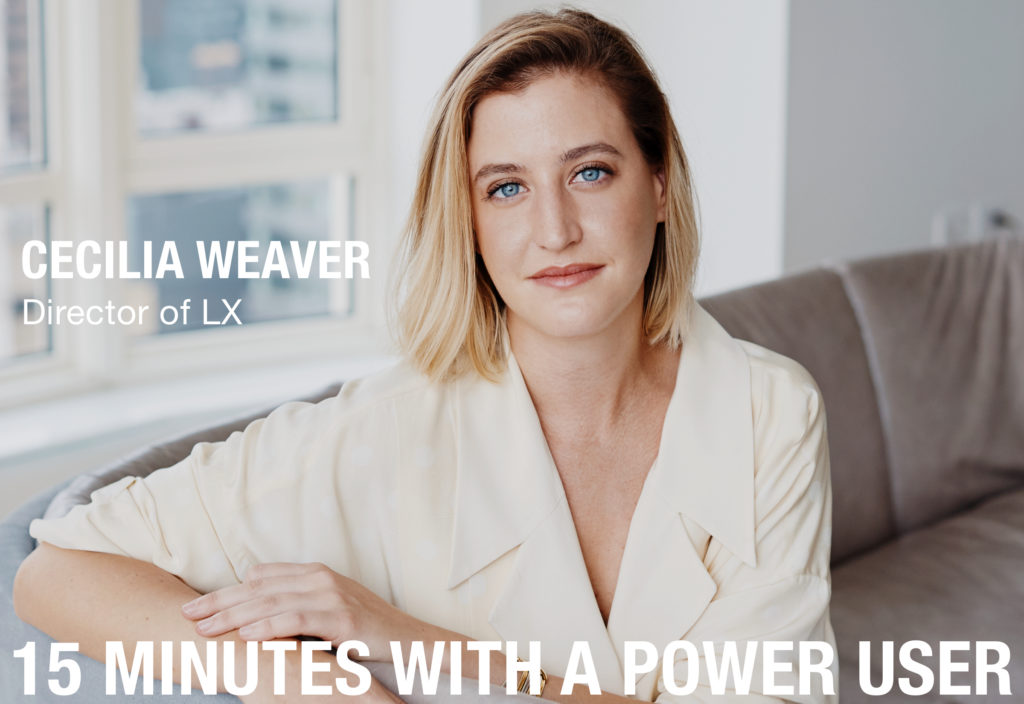15 Minutes with a Price Database Power User: Cecilia Weaver


Artnet Price Database Team

There is only one tool trusted by art-world insiders to buy, sell, and research art: the artnet Price Database. Its users across industries—from auction houses to museums, galleries and government institutions—represent the art world’s most important players. We’re taking 15 minutes to chat with some of the artnet Price Database’s power users to get their take on the current state of the market and how they’re keeping up with the latest trends.
We recently caught up with Cecilia “Ceci” Weaver, director of the exhibition space LX, which opened earlier this year. Using her deep understanding of the art market—thanks in part to her time at Sotheby’s, where she worked with rainmaker Amy Cappellazzo—Cecilia and her partner are taking a different approach to the traditional gallery model. LX serves to fill a gap in the art market, offering a different kind of collecting experience to their clients in their Upper East Side space.
Here, Cecilia shares her vision for LX and how the next generation approaches collecting.
Ceci, you recently opened LX at 60th Street and Park Avenue on New York’s Upper East Side. What differentiates LX from other galleries?
Named for our location (roman numerals for 60), we aren’t a gallery in the traditional sense, as our model is different by design. LX presents selling exhibitions by guest curators and collaborators in our upstairs gallery space with the overarching theme of “bringing downtown uptown.” We also have a private viewing room for secondary market sales and offer collection management services.
Having been behind the scenes at an auction house, what misconceptions do you think people have about auctions?
The seeming incompatibility of loving art and engaging in the art market can create a division that I think is a bit of a shame. Being in-house at Sotheby’s, I was surrounded by people who felt passionately about art and artists in a way that is perhaps not very visible. We all have that common denominator in the end.
You and your partner in LX, the real estate entrepreneur Louis Buckworth, are both young. Have you found that your peers are actually buying art, or are they just instagramming it?
Studies have shown that millennials are generally more careful with their money than generations prior, perhaps because they experienced the financial crisis of 2008 and the subsequent recession. So, while I have noticed that my peers are more thoughtful with their purchases, many are certainly still purchasing. And, of course, Instagramming.

David Yarrow, Rajasthan (2019). Yarrow currently has a show of his wildlife photographs at LX Arts. Courtesy of LX Arts.
Which artists have captured the attention of the next generation of collectors?
This is a tricky question. I don’t think it is fair to say that there is an archetypal artist or style that appeals to a generation per se. That being said, there is certainly a palpable buzz and increased engagement with historically under-recognized and undervalued artists.
What are some significant points in your career that led you to want to be a gallerist?
The summer after my senior year of high school, I interned at Luhring Augustine, which is probably where the gallery seedling was planted. I worked on a group show of Icelandic artists that summer entitled “It’s Not Your Fault.” I remember spending an entire day crumpling black construction paper for a work by Haraldur Jonsson and thinking how lucky I was to be a part of the process, even with hands full of paper cuts. I guess you have to have a sense of excitement even just being in the proximity of art if you want to be in this world. That or I am just a glutton for punishment…
We believe people should buy art because they love it. But if you were to give some investment advice on buying and collecting art, what would it be?
Agreed. First, buy for love. Second, educate yourself and if you are not sure how best to do that, reach out to and work with people you trust.
What is the last thing you searched for on the Price Database?
The Price Database is the art market research tool trusted by appraisers and aspiring collectors alike. To learn more and to choose from our range of subscription options, click here.